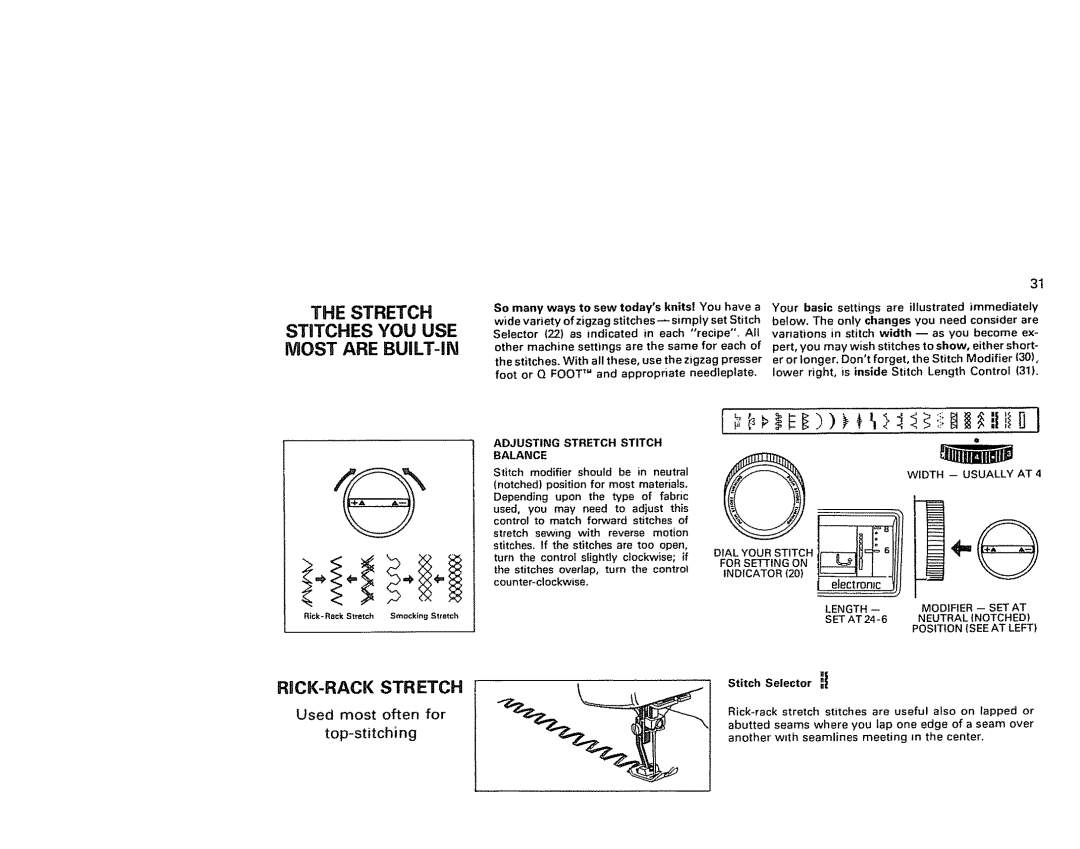
THE STRETCH
STITCHES YOU USE MOST ARE BUiLT-IN
So many ways to sew today's knits! You have a wide variety of zigzag stitches_ simpiy set Stitch Selector (22) as indicated in each "recipe"_ All other machine settings are the same for each of the stitches. With all these, use the zigzag presser foot or Q FOOT TM and appropriate needleplate,
31
Your basic settings are illustrated immediately below. The only changes you need consider are variations in stitch width w as you become ex- pert, you may wish stitches to show, either short- er or longer. Don'tforget, the Stitch Modifier 30), lower right, is inside Stitch Length Control (3t).
RI_CK-RACK STR ETCH
Used most often for
top-stitching
ADJUSTING STRETCH STITCH BALANCE
Stitch modifier should be in neutral (notched) position for most materials. Depending upon the type of fabric
used, you may need to adjust this control to match forward stitches of
stretch sewing with reverse motion stitches. If the stitches are too open,
turn the control slightly clockwise; if the stitches overlap, turn the control
0 |
| ii |
| |
WIDTH | ||||
| ||||
DIAL YOUR STITCH |
|
|
| |
FOR |
|
|
| |
INDICATOR (20) |
|
|
| |
LENGTH | MODIFIER | SET AT | ||
| NEUTRAL | INOTCHED) | ||
| POSITION | (SEE | AT LEFT) | |
Stitch Selector _{
abutted seams where you lap one edge of a seam over another with seamlines meeting in the center.
